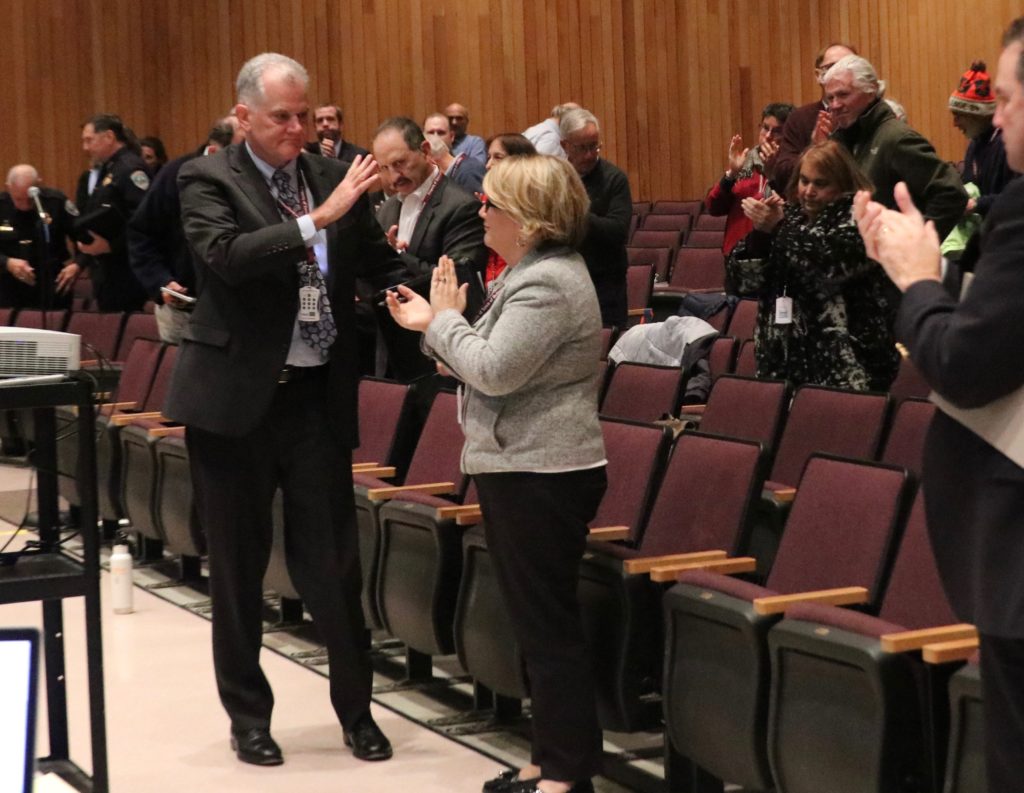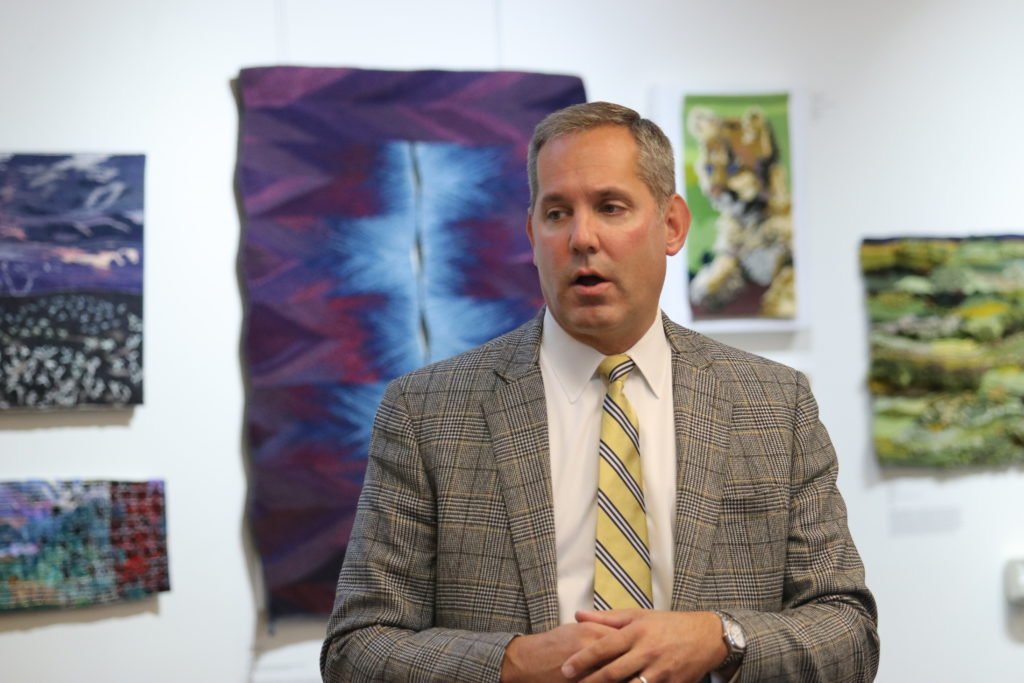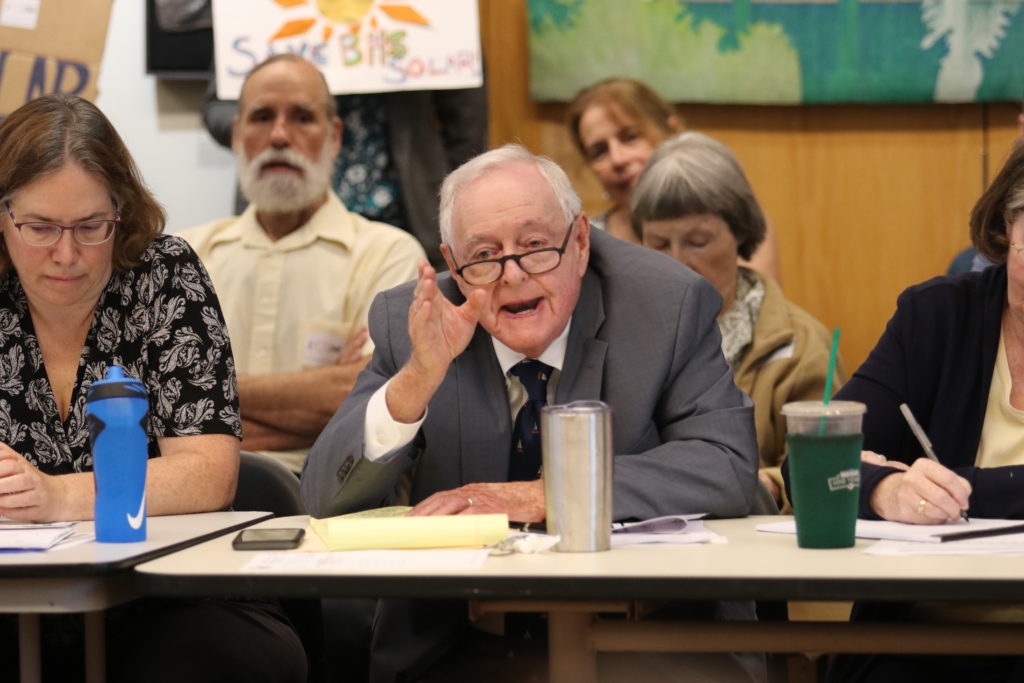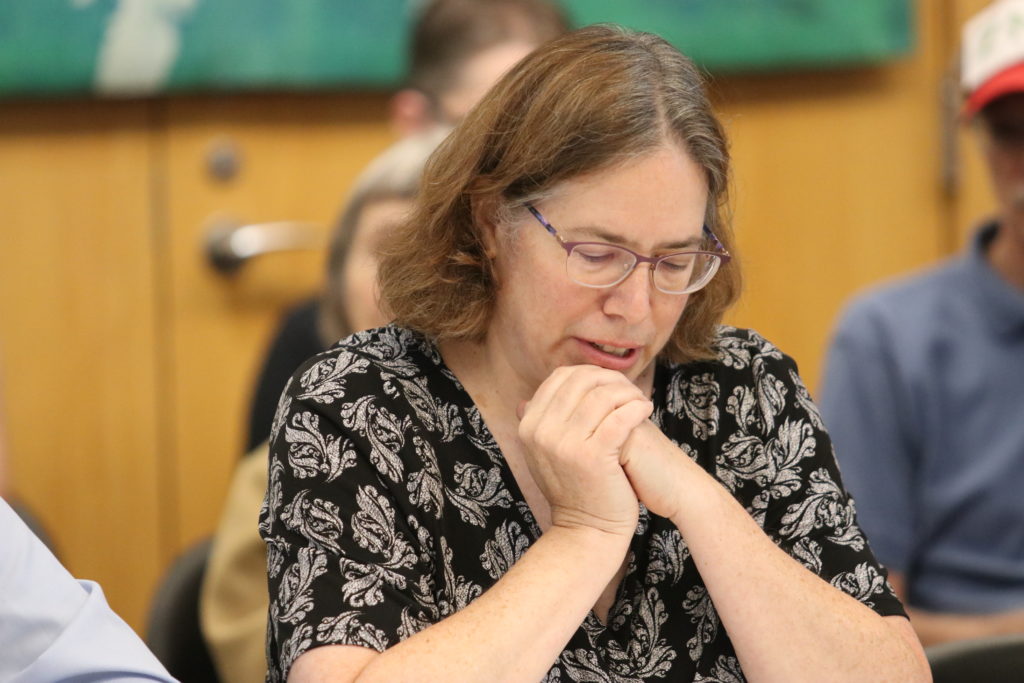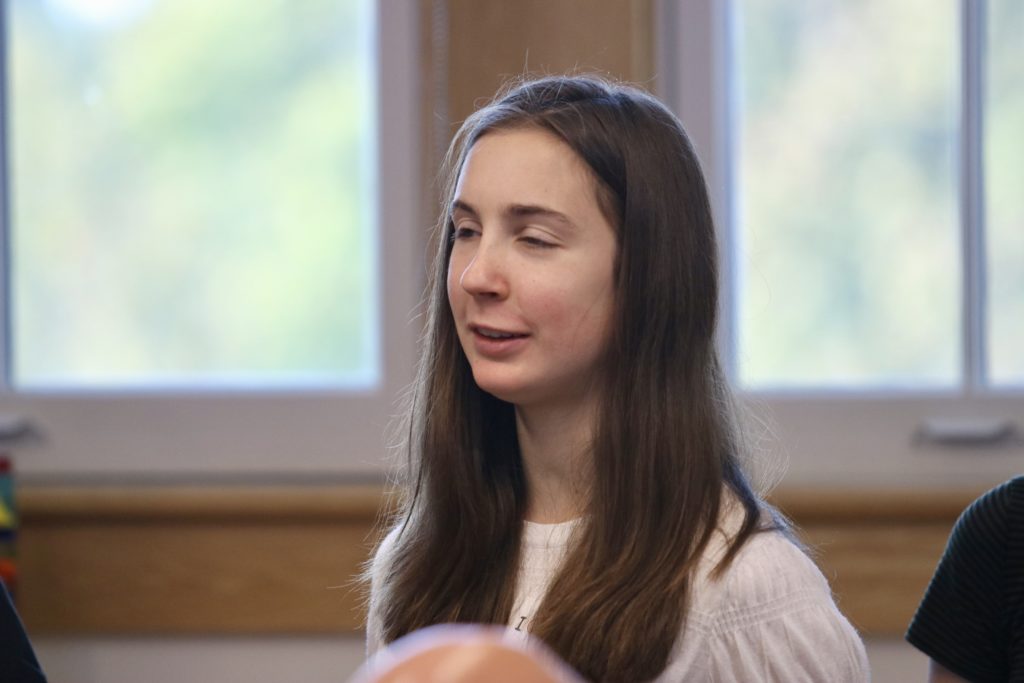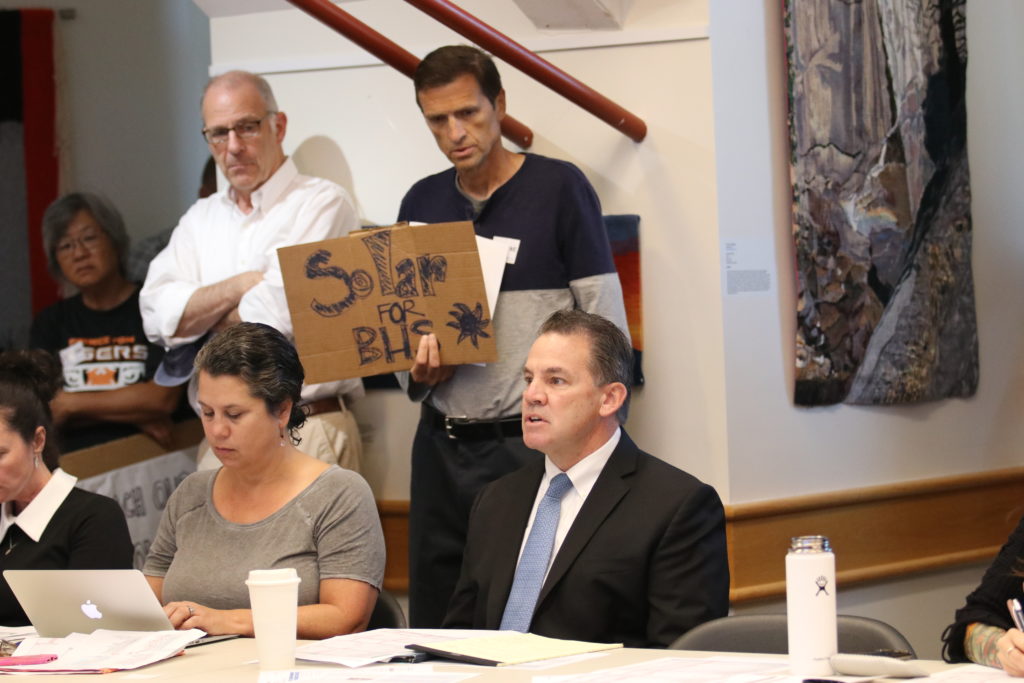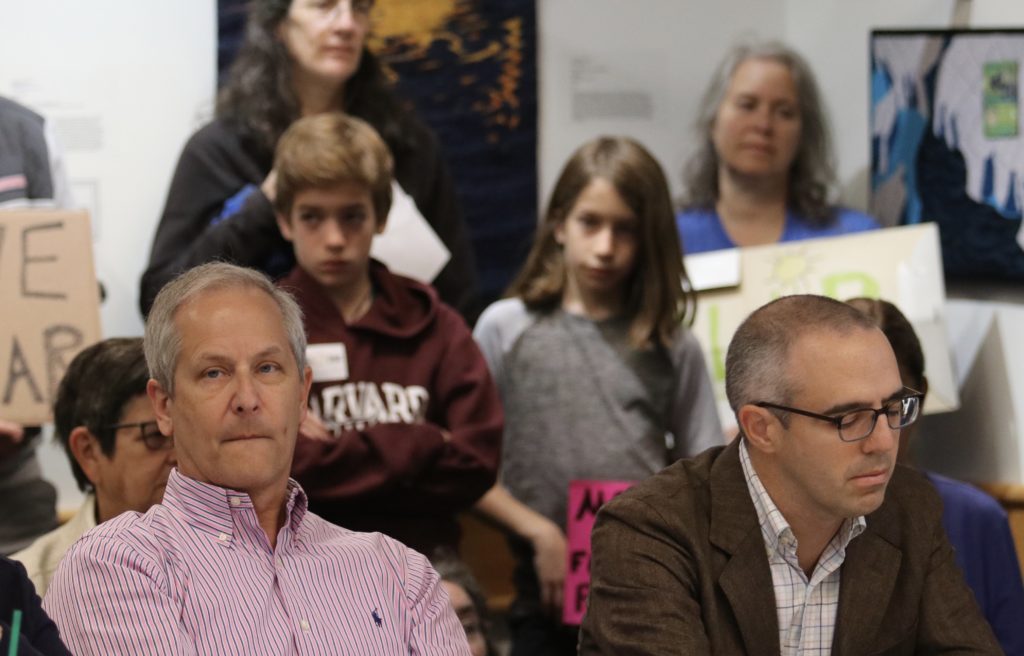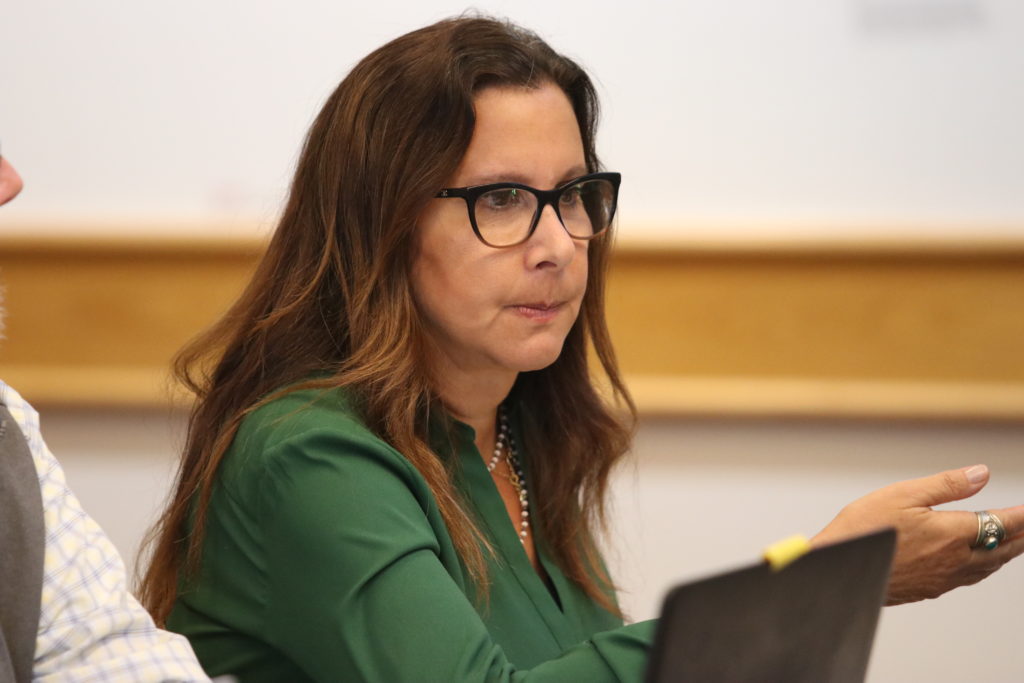Photo: Bob McLaughlin, Pct. 2. speaking against the town rescinding leaving Minuteman.
F. Scott Fitzgerald famously said, “There are no second acts in American lives.” Wednesday night, Belmont Town Meeting affirmed that saying when it rejected the opportunity to again become a member of the Minuteman High School district.
The article to rescind the 2016 Town Meeting decision to decamp from the vocational school failed, 140-95, as a majority of members are hoping there will be plenty of space in the foreseeable future for students from non-member towns to attend the Lexington school.
“It’s a lot to do with how strongly you believe your own projection of the enrollment numbers,” said Jim Gammill, whose argument for rescinding the earlier decision was voted down by the town’s legislative body.
Members who sought to have the school readmitted to the nine-town district – a position supported by the school committee and Belmont Superintendent John Phelan – are worried that a recent enrollment boom at the school could forecast in an increasing number of Belmont students without a desk waiting for them.
Gammill (Pct. 2) who headed the task force to find an alternative to Minuteman, told members that facts have changed over the past three years from the time when Belmont decided to leave to save a significant amount by not taking on the debt of a new building’s while being able to still send students to Minuteman.
“What changed … is the new building,” said Gammill referring to the 257,000 sq.-ft. structure that opened in September, a year early and under budget. With 20 different vocational and technical shop concentrations, Gammill said interest by middle-schoolers has skyrocketed, a trend he believes is sustainable.
“At this rate, three years from now there will be a full school,” said Gammill, with the real prospect of Belmont students looking from the outside in as member school students are expected to take the available slots. If that occurs, “we won’t have the $100s of thousands of savings” as was predicted in 2016.
In addition, “There is no Plan B,” Gammill protested, saying other vocational schools or programs in eastern Massachusetts are unable to accept Belmont’s students as they are filled or the cost in tuition and transportation would make them “cost prohibitive.”
Like Henry V at Harfleur, Bob McLaughlin (Pct. 2) led the Minuteman skeptics “once more into the breach” having been one of the most vocal proponents three years ago for a BelExit.
“This is a bad deal,” said McLaughlin.
While calling the school “the best vocational training for our kids,” McLaughlin reminded the members that the town left the district in 2016 (by a 72 percent to 28 percent margin) after the other members approved building a new school that was “too large and forced us to take on all that debt.”
‘Belmont was trapped in an agreement that it couldn’t get out of and every year they would hand us a bill that was non-negotiable” for a school that spends nearly $36,000 per student.
McLaughlin said Minuteman has seen student population free fall from 1,254 when it opened in 1977 to 383 in 2016 “and it’s going to continue to drop along with the need for vocational education.” Even if the pro-return enrollment numbers are correct, Belmont would see, at most, two to three students being denied a seat at the table.
”We’re going to spend $472,000 (as a re-entry fee), $200,000 a year (in tuition costs) and assume [a portion of the] $144 million in debt” to assure three students will have an education at Minuteman, said McLaughlin.
And with Belmont ready to undertake a $6 million Prop 2 1/2 override on the ballot in one year’s time, “we’re giving sound bites to the opposition [to the override],” said McLaughlin.
Proponents for taking a second walk down the aisle with Minuteman attempted to show the growing need for a quality school by a growing number of students in Belmont.
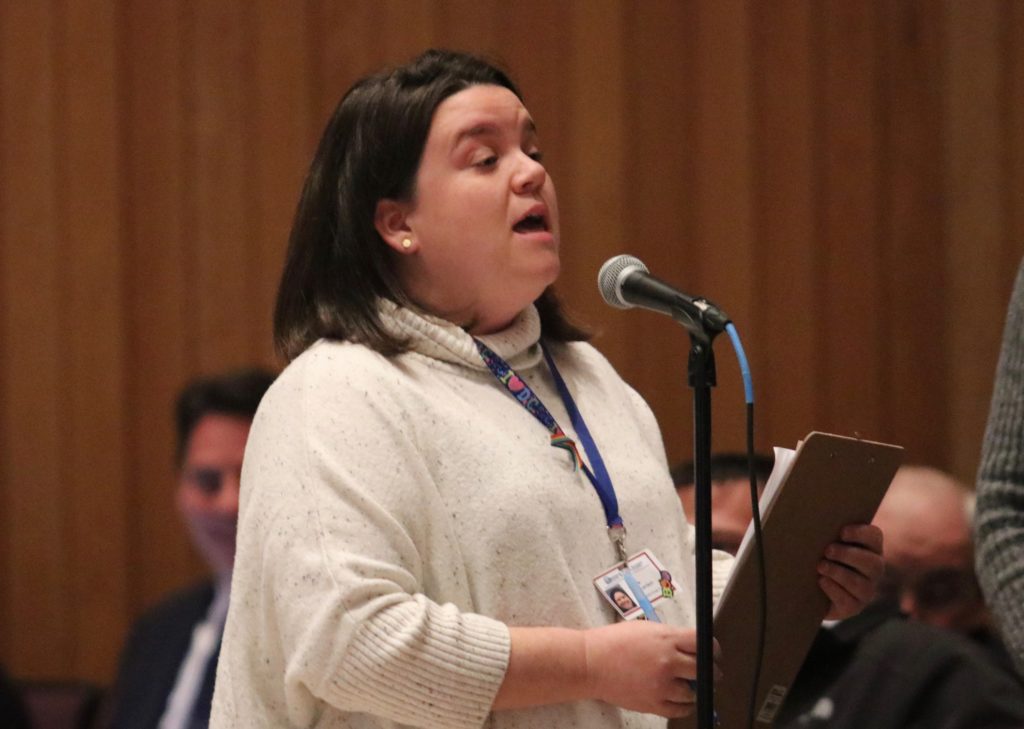
Chenery eighth grade teacher Caitlin Corrieri said that while many students succeed in the current learning environment, “I also have students for whom sitting in a 50 minute traditional class is torture, who learned better using their hands to make and create, whose brains think outside the box.”
“There is no ‘one size fits all‘ school for everyone,” said Corrieri, an 11 year veteran in Belmont. The alternative provided by Minuteman would be a better fit for some students. And that message is being heard at the Chenery; currently 54 eighth graders signed up to tour the school and 10 have submitted applications.
“I’m here tonight on behalf of our eighth grade teachers to implore you to allow our student to have those options in the future,” said Corrieri, noting that higher education and the workforce are evolving “and Minuteman is responsive to these changes.”
“I hate to see students turned away for Minuteman on a long waitlist because we didn’t speak out on this,” she said.
Jack Weis (Pct. 1), who was Belmont’s representative to the Minuteman School Board in 2016, voiced the opinion of many stating “that there is no right or wrong decision on this question as there are risks associated with either vote. Town Meeting members are going to have to decide … which version of the future they think is more likely.”
“And if they are wrong, which set of downside risky they are more comfortable leaving the town exposed to,” he said.
Mike Crowley (Pct. 8) who is a member of the school committee said “continued membership assures access for our kids for years to come … a no vote tonight put the future in jeopardy.” Once students are “squeezed out” of attending Minutemen, “the quality and breadth of programming isn’t there in the other schools that we may be able to offer us a spot or two.”
Warrant Committee member Elizabeth Dionne (Pct. 2) wasn’t convinced there will be an “enrollment crisis” to require Belmont to spend a significant amount of money annually when the town is preparing for a $6 million override in a year’s time.
With the needs of the general student population and special needs pupils to be considered, Belmont should find a way to “provide vocational education in a more cost-effective fashion,” she said.
“We don’t need to buy 40 years of insurance to make sure this happens,” said Dionne.
Jessie Bennett (Pct. 1) agreed with Weis that the financial difference in staying in or leaving Minuteman is relatively small (a cost-benefit of $100,000 being a non-member using the average number of Belmont students and the current student population) considering the $130 million-plus town budget. “If these numbers are so close, than we should vote our values and our values are to support students and provide them with the best possible education they can get.”
“If we don’t have this available for all kids, we are introducing instability into the decision making process for eighth grade families, we are introducing instability into the decision making process for every family … and in our future as a town that provides the best education for all students.”
The final vote – after which the Town Meeting showed its appreciation of Gammill’s work with a standing ovation – revealed the majority of members voted on the belief that interest in Belmont and surrounding towns in attending Minuteman will abate.
“That’s a lot to hope for because we really don’t have a Plan B,” said Crowley.
